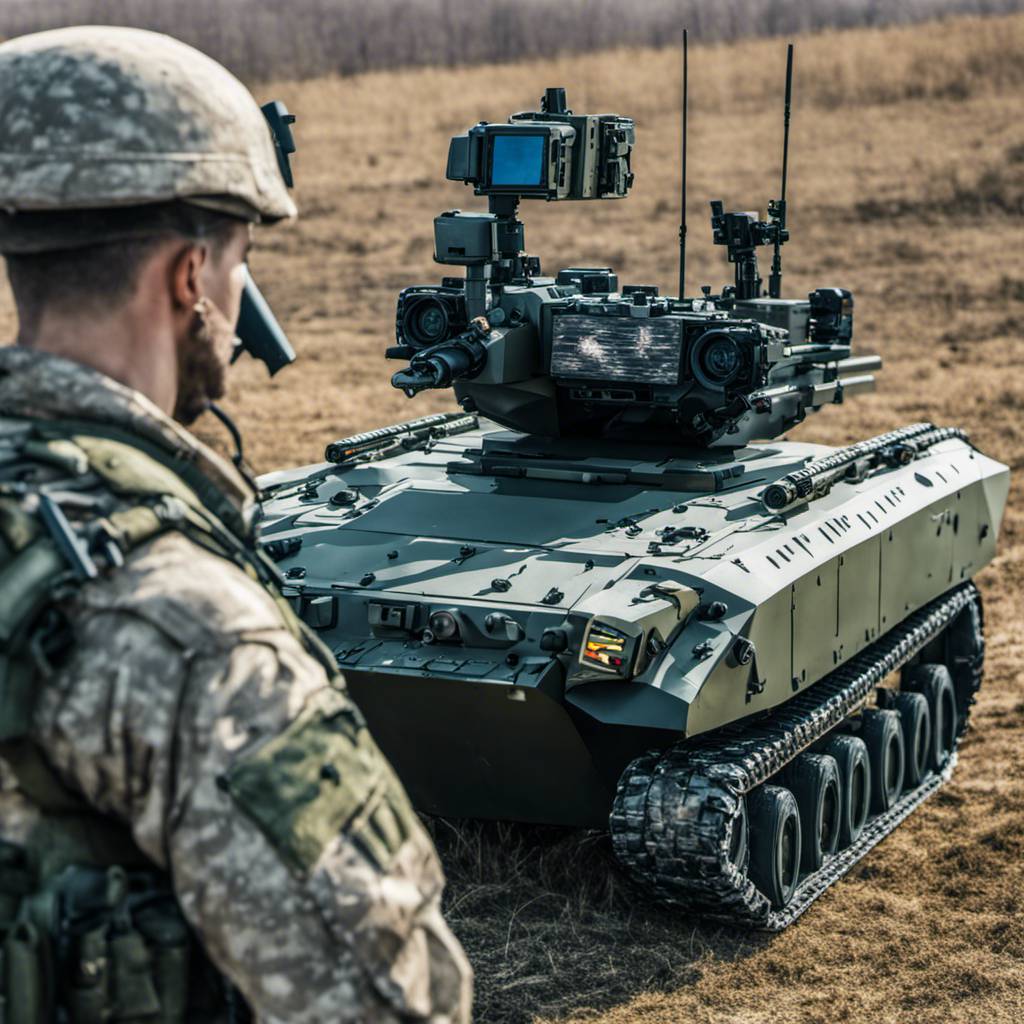In the heat of combat in Zaporizhzhia Oblast last summer, Ukrainian soldier Oleksandr Navarenko had a moment of clarity. Under heavy fire from Russian tanks, he pondered the question: “Why are we risking human lives when machines could be doing the job?” This question led him to develop a potentially game-changing innovation in warfare technology.
Navarenko, a 59-year-old combat engineer, is part of the 3rd Separate Assault Brigade currently engaged near the Russian-occupied city of Bakhmut in Donetsk Oblast. Since his moment of insight, he has developed two prototypes of unmanned ground vehicles (UGVs) designed to assist front-line troops in their dangerous assault missions.
The first prototype, equipped with anti-tank mines, has already demonstrated its potential by inflicting injuries on Russian troops. The second model, yet to be tested in combat, is designed to quietly approach enemy positions across varied terrains and launch rocket-propelled grenades. Both versions are currently in the development stage.
UGVs have not yet become as integral to combat operations in Ukraine as drones have. While the West has supplied some UGVs to Ukraine for evacuation and infantry fire support purposes, the number supplied is insufficient to make a significant impact, according to the Center for Strategic and International Studies.
However, Ukrainians both on and off the battlefield are striving to change this. In addition to soldiers like Navarenko, Ukrainian tech companies are exploring designs for UGVs. The Digital Transformation Ministry is endeavoring to persuade Ukraine’s military to embrace these new innovations as swiftly as possible.
Ukraine’s Defense Ministry recently held a meeting titled “Ground Robotic Systems” with representatives from the Armed Forces and other ministries. The meeting aimed to foster the development and integration of ground-based robotic systems into military operations.
Mykhailo Fedorov, Minister of Digital Transformation, acknowledges that integrating these developments is a time-consuming process. However, he cites the success of drones as proof of its feasibility. He notes that the number of drone models officially used on the front lines has increased from seven to 62 since the introduction of a fast-track approval process.
UGVs are still in their infancy, but both Ukrainian and Russian inventors are launching self-initiated projects in the hope that their use could be a game changer on the battlefield. “This is the most technologically advanced war in human history. It is innovations and tech solutions that will help Ukraine win,” Fedorov said.
One such company is SkyLab, a Ukrainian defense company co-founded by Yevhen Rvachov. SkyLab initially focused on the development of Unmanned Aerial Vehicles (UAVs), including the Shoolika mk6 attack drone, which is reportedly immune to electronic warfare jamming. However, Rvachov, the company’s lead engineer, saw potential for ground-based systems as well.
He developed the Sirko-S and Sirko-S1 robots, remote-controlled vehicles capable of carrying up to 150 and 200 kilograms of weapons or equipment respectively. Despite their potential, these machines are vulnerable to landmines and could be easily spotted by Russian forces due to their size.
Nevertheless, Rvachov remains optimistic about the potential of UGVs in warfare. “It is better to lose $8,000-10,000 than a person,” he said. “Our main goal is to use robotic systems as much as possible so military personnel don’t lose their lives.”
The government is encouraging innovators to submit their ideas via Brave1, a platform offering informational and financial support for defense tech projects. Since its launch in April 2023, Brave1 has registered over 500 defense tech developments on its platform and awarded grants to about 40 projects.
Despite the potential of these innovations, bureaucracy often hampers progress. However, platforms like Brave1 and Brave Inventors are working to streamline the process and get these potentially life-saving technologies onto the battlefield as quickly as possible. As Nataliia Kushnerska, Project Lead at Brave1, puts it: “We have to move fast as the time costs the highest price – our defenders’ lives and health.
